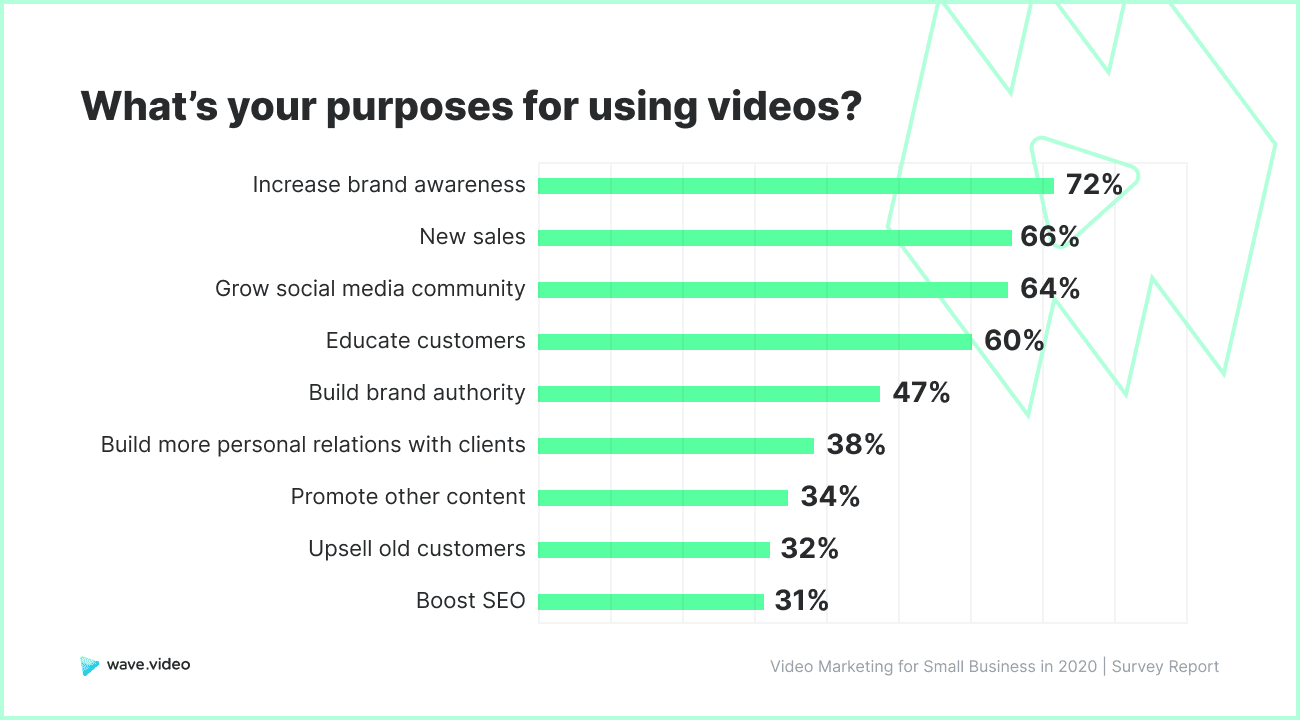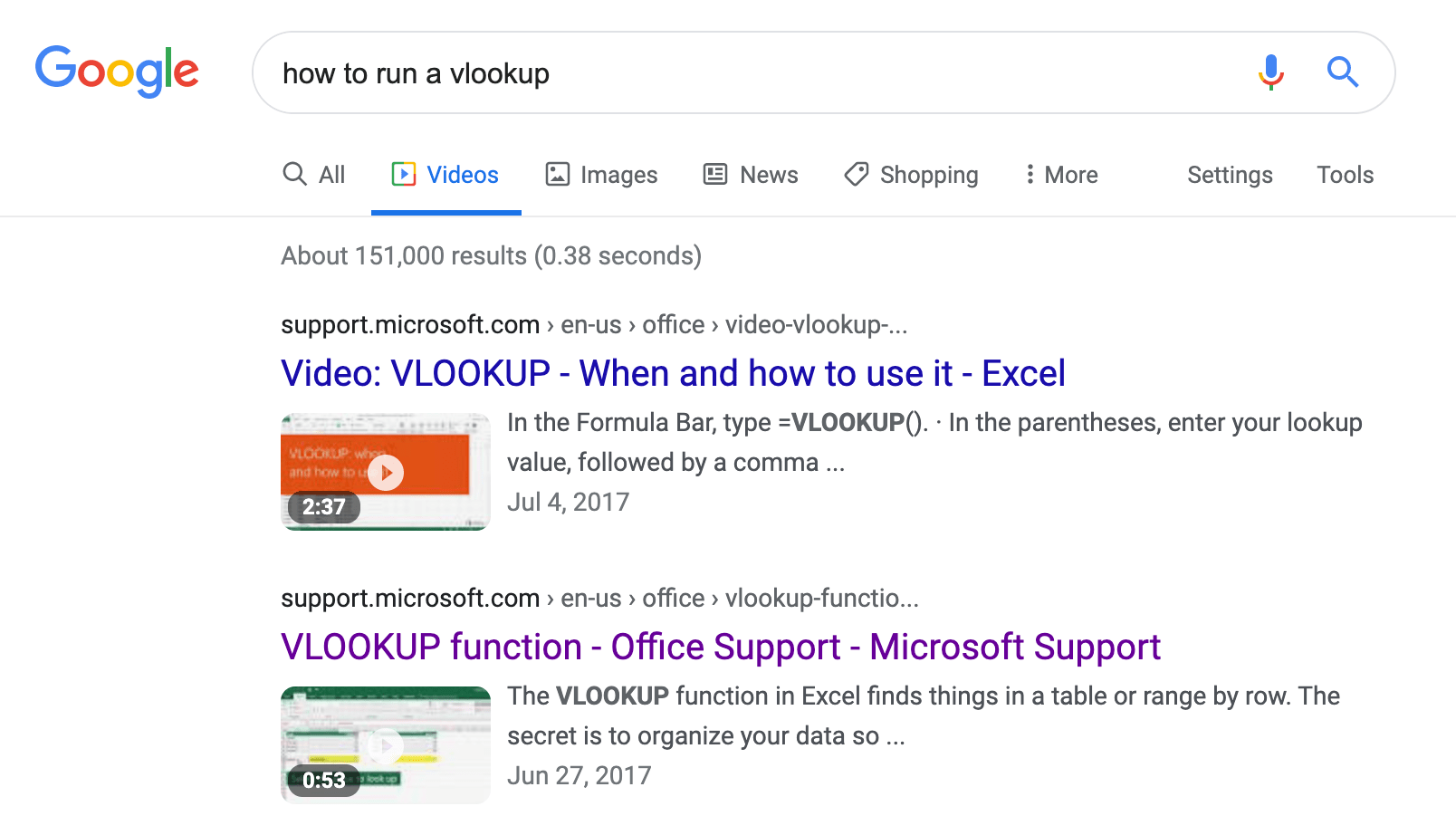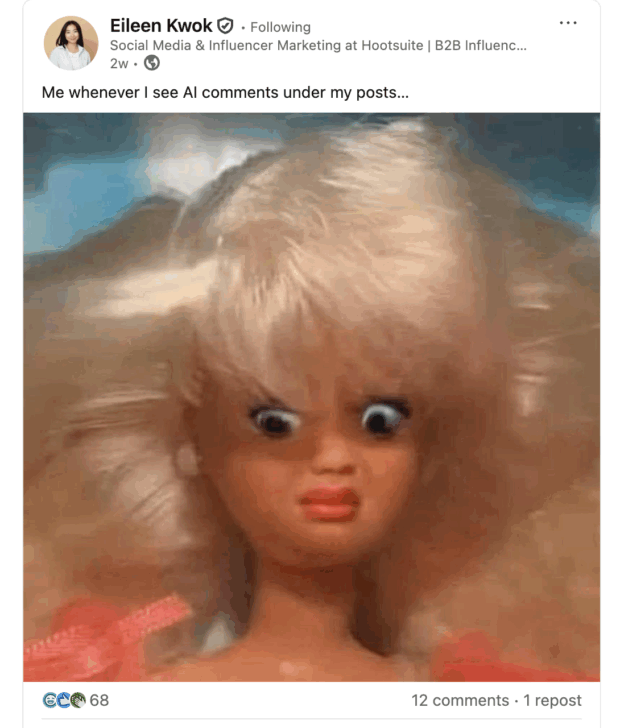Video is fast-becoming the preferred tool for most marketers to connect with and reach new audiences.
Video marketing is undeniably effective, too — in fact, including a video on a landing page is capable of increasing conversion rates by over 80%, and the mere mention of the word “video” in your email subject line increases open rates by 19%.
But, even if you already know about the importance of video, I'm willing to bet you aren't completely aware of how other brand's are using video … or, more importantly, why.
Each business will use video for a completely different goal — ranging from increasing brand awareness, to boosting SEO.
Here, we dove into new research from Wave.video to explore the top five reasons brands use video. Hopefully, these statistics will inspire you to use video in new, unique ways in 2021 and beyond. Let's dive in.

1. Brands use videos to increase brand awareness.
Video can help your business reach new audiences and attract new viewers to your social media pages and website, which is likely why “increase brand awareness” is the number one reason brands use video.
Take this video from Tasty, a Buzzfeed brand:
Ultimately, Tasty's video isn't meant to sell any products (at least, not directly) — instead, it's simply meant to entertain new audiences and, ultimately, increase awareness of Tasty's brand.
2. Brands use video for new sales.
Consider how you might create entertaining or informative videos with the sole purpose of increasing brand exposure. Ultimately, brand awareness can foster trust and increase brand equity, so it plays a critical role in your company's bottom line.
To highlight this point, let's start with an example. Take a look at this video, highlighting Kate Hudson's company, Fabletics, below:
While at first glance it might look like a somewhat-random video of Kate Hudson running through the Aspen wilderness, it's actually an effective example of a video with the purpose of increasing sales — without appearing like, well, an ad.
For instance, while the video portrays Hudson in a range of workout gear from her October Fabletics collection, it also incorporates an exclusive interview with the celebrity to discuss family, nature, and growing up in the mountains. Add in a gorgeous Aspen backdrop, and viewers might be fooled by the true purpose of the video: to sell Fabletics clothing.
Consider how you might also create a unique, compelling video to attract new prospects and even close sales deals.
3. Brands use video to grow a social media community.
Did you know that four of the top six channels on which global consumers watch video are social channels?
Ultimately, many marketers use video to attract visitors to a company's social pages.
Consider, for instance, this #ShaveItOff video by Gillette partner The McFarlands:
While the video is undoubtedly entertaining to watch, it also serves a powerful purpose: to send some of The McFarlands' 2 million followers back to Gillette's own social channels. Best of all, the hashtag #ShaveItOff can be found on Gillette's Instagram page as well, ensuring viewers can find the brand regardless of which social channel they prefer.
4. Brands use videos to educate customers.
Video can be an incredibly effective tool for education.
HubSpot Academy, for instance, often uses YouTube as a platform to educate its viewers. Oftentimes, HubSpot will even collaborate with thought leaders like Seth Godin to add a new perspective on a topic:
Many people learn best through visuals, which is why video can be a phenomenal tool for educating prospects and even customers.
Consider how you might incorporate educational videos into your own content strategy in unique ways – for instance, perhaps you include video demos for interested prospects, or how-to tutorials for new users of your product.
5. Brands use video to build brand authority.
Similar to the reason listed above, the fifth reason brands use video is to build brand authority on a subject, and demonstrate expertise.
Ideally, this means when people are searching for help on a certain topic, your brand will show up. After watching your videos, if viewers feel they've gained unique insight, they'll trust your brand more and explore other offerings.
Consider what happens when I search “How to run a vlookup” in Google. When I click on the video section (since I prefer learning about vlookups through visuals like video), Microsoft is the first two video results:

In this example, Microsoft is demonstrating its brand expertise when it comes to its Excel product — and, more widely, anything related to technology and data. This provides Microsoft with a good opportunity to showcase its brand authority while attracting new visitors to its website.
And that's it! The top five reasons brands make videos. Take a look at The Ultimate Guide to Video Marketing to learn more about how you can create a powerful video marketing strategy for your own brand in 2021.
![The Top 5 Reasons Brands Make Videos [New Research]](https://localseoresources.com/wp-content/uploads/https://blog.hubspot.com/hubfs/Google%20Drive%20Integration/The%20Top%205%20Reasons%20Brands%20Make%20Videos%20%5BResearch%5D.png)




Recent Comments